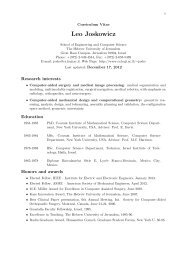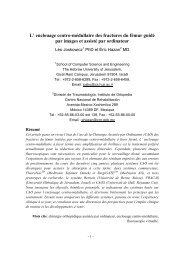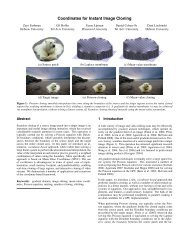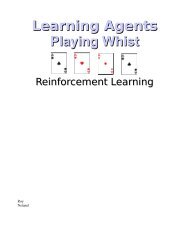TEL AVIV UNIVERSITY Gaddi Blumrosen
TEL AVIV UNIVERSITY Gaddi Blumrosen
TEL AVIV UNIVERSITY Gaddi Blumrosen
You also want an ePaper? Increase the reach of your titles
YUMPU automatically turns print PDFs into web optimized ePapers that Google loves.
3.3 ST coding.<br />
3.3.1 Introduction<br />
150<br />
210<br />
120<br />
240<br />
90<br />
270<br />
Figure 10: All eigenvector spatial response for 4 antenna elements array.<br />
ST diversity techniques, in particular Tx diversity techniques as assumed in our<br />
system model, exploit space selectivity and thus gain spatial diversity. In particular,<br />
we will focus on this section on exploiting Space-time diversity- Exploit space and<br />
time selective fading by multiplexing and or replicating transmitted signal in time and<br />
in space. It can be done, by decreasing the correlation between spatial diversity<br />
branches and thus increase the diversity order of the system.<br />
One way for increasing diversity order is by forcing a different delay to each antenna<br />
element, a technique called also delay diversity. A second way can be achieved by<br />
introducing different phase (random) to each element [18]. A third way, combines<br />
time shifting and altering the shifted symbol phase (conjugate symbol) is called Space<br />
Time Codes (STC). When the coding is coded in blocks, it is called Space Time<br />
Block Codes (STBC). When the blocks are orthogonal it is called Orthogonal Space<br />
Time block Codes (OSTBC). Other space-time coding techniques are layered space–<br />
time architecture spatial multiplexing (e.g. BLAST) which enhance capacity by spacetime<br />
multiplexing, ST trellis codes (STTC) and ST Turbo codes. Common to all the<br />
space–time coding schemes mentioned above is that they do not exploit CSI<br />
knowledge inherently at the transmitter. We will focus mainly in OSBTC and unless<br />
mentioned otherwise by the term STC or STBC we mean OSBTC.<br />
We start this chapter with STBC Design Principles, based on minimization of SER.<br />
Simple orthogonal ST coding was first derived in [20], for two transmit antennas,<br />
later extended to four and eight transmit antennas by [22], with low-complexity<br />
receiver. It was shown that these OSTBC provide the system its maximum diversity<br />
order. We will end this chapter with examination of OSTBC performance as a<br />
function of the number of antennas and with antenna patterns induced by OSTBC.<br />
1<br />
0.8<br />
0.6<br />
0.4<br />
0.2<br />
60<br />
300<br />
30<br />
180 0<br />
330








